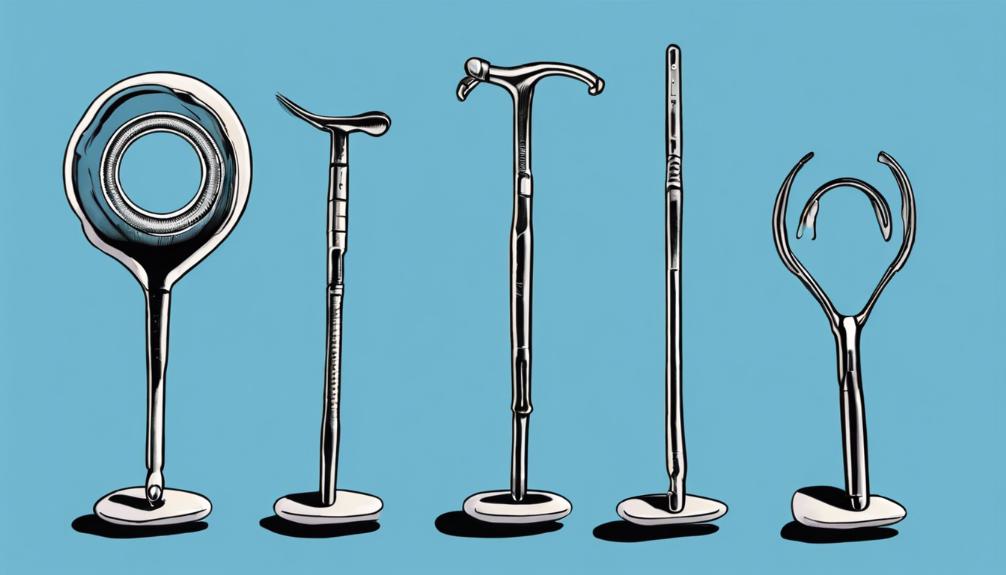Hair Relaxer Myomectomy Lawsuit: Did You or a Loved One Have a Myomectomy?
In the realm of legal and health intersections, the hair relaxer myomectomy lawsuits present a compelling case of how consumer products, ostensibly designed for aesthetic enhancement, might harbor risks with severe health implications. This litigation spotlights the alleged link between chemical hair relaxers and an increased risk of uterine fibroids, necessitating myomectomy surgeries for affected individuals. As these legal claims unfold, the question of manufacturer accountability and consumer safety takes center stage, urging a closer examination of the evidence and potential outcomes. This scenario prompts a critical discussion on the broader implications for regulatory oversight and the well-being of consumers, signaling a pivotal moment for stakeholders to consider the ramifications of these findings.

Myomectomy Procedures Overview
Myomectomy, commonly performed to remove uterine fibroids, encompasses several surgical techniques tailored to the patient's specific needs and fibroid characteristics. This procedure is a pivotal option for women desiring to alleviate symptoms while preserving their uterus, often with a view toward future fertility. The decision to undergo a myomectomy is not taken lightly, as it involves a comprehensive evaluation of the fibroids' size, location, and the patient's symptomatology, alongside their reproductive goals. Healthcare providers play a crucial role in guiding patients through this decision-making process, ensuring they are informed about the potential benefits and risks involved. This personalized approach aims to achieve optimal outcomes, improving the patient's quality of life while minimizing the impact on future fertility.
Types of Myomectomy

Several surgical techniques are available for the removal of uterine fibroids, each tailored to meet the unique needs of the patient and the specific characteristics of the fibroids. The most common types include abdominal myomectomy, also known as open myomectomy, which involves a larger incision in the abdomen to access and remove the fibroids. Laparoscopic myomectomy offers a minimally invasive option, using small incisions and a camera to guide the surgery. Robotic myomectomy is similar but utilizes robotic technology for more precision. Hysteroscopic myomectomy is best suited for fibroids within the uterine cavity, using a scope through the vagina and cervix. Each method has its advantages, depending on the fibroid's size, location, and the patient's health and fertility goals.
Hair Relaxer Lawsuit Explained

Amid growing concerns, hair relaxer lawsuit cases have emerged, alleging that chemical hair straightening products increase the risk of developing uterine fibroids, leading to the necessity of myomectomy procedures for affected individuals. These lawsuits are grounded in research findings that suggest a correlation between the long-term use of chemical relaxers and an elevated risk of uterine fibroids—a condition that can result in significant health complications, including severe pain and infertility. Plaintiffs in these cases argue that manufacturers failed to warn consumers about the potential risks associated with their products. Legal actions are being pursued to hold these companies accountable, emphasizing the need for transparency and safety in the beauty and personal care industry.
Eligibility for Compensation

Individuals who have undergone myomectomy procedures as a result of uterine fibroids allegedly linked to the long-term use of chemical hair relaxers may be eligible for compensation through legal action. This eligibility extends to those who can establish a direct correlation between their medical condition and the use of specific hair relaxer products. Legal precedents and ongoing investigations suggest that manufacturers of these products may have failed to adequately warn users about the potential risks associated with their use, including the development of uterine fibroids leading to the need for myomectomies. If substantiated, affected parties could receive compensation for medical expenses, pain and suffering, lost wages, and other damages resulting from the use of these hair relaxer products.
How to File a Claim

To initiate a claim related to health issues stemming from the use of hair relaxer products, affected parties must first gather comprehensive evidence linking their condition to the product in question. This includes medical records, documentation of product use, and any relevant physician statements. Subsequently, contacting a specialized attorney experienced in product liability and personal injury law is essential. These legal professionals can offer guidance on the strength of the claim, potential compensation, and the steps required to formally file the lawsuit. They will also handle the complexities of litigation, including negotiation with the defendant's legal team and, if necessary, representation in court. Ensuring all documentation is meticulously prepared and presented is crucial for a successful claim process.
Risks of Hair Relaxing Products

Understanding the legal process for filing a claim against hair relaxer products sets the stage for a deeper exploration of why these products pose significant health risks, particularly in relation to the development of uterine fibroids. Chemical hair relaxers contain various compounds that have been linked to a heightened risk of developing these non-cancerous growths in the uterus. Research indicates that the toxins present in these hair care products can disrupt hormonal balance, leading to a conducive environment for fibroids to flourish. These findings underscore the importance of scrutinizing the ingredients in hair relaxers and the potential side effects they may harbor. As awareness grows, consumers are urged to weigh the risks associated with these products, particularly for individuals with a predisposition to uterine fibroids.
Legal Investigation Process

The legal investigation process into hair relaxer myomectomy lawsuits commences with identifying and scrutinizing the companies involved for potential violations of legal rights. This meticulous process involves gathering substantial evidence, such as medical records, testimonies of affected individuals, and expert opinions linking the use of hair relaxing products to health complications. Legal teams meticulously review product ingredients, marketing practices, and regulatory compliance to establish a pattern of negligence or misrepresentation. Furthermore, the investigation evaluates the extent of harm suffered by plaintiffs, including the severity of medical conditions and the financial impact of medical treatments and lost wages. This comprehensive approach ensures that all aspects of the case are thoroughly examined to support the pursuit of justice and compensation for affected individuals.
Companies Under Scrutiny

Building on the foundation of the legal investigation process, attention now turns to the specific companies implicated in the hair relaxer myomectomy lawsuits. These companies, manufacturers, and distributors of chemical hair relaxing products, are under intense scrutiny for allegedly failing to warn consumers about the potential health risks associated with their products. The legal spotlight is not only on the presence of toxic chemicals in these hair relaxers but also on the extent to which these companies were aware of the potential for their products to contribute to the development of uterine fibroids. The focus of the lawsuits underscores a critical examination of corporate responsibility and accountability, highlighting the need for transparency and consumer safety in the beauty and personal care industry.
Requesting Free Legal Review

In the wake of mounting legal scrutiny, individuals affected by hair relaxer products are encouraged to seek a free legal review to assess potential claims for compensation. This crucial step allows those who have undergone myomectomy procedures, such as laparoscopic, robotic, or hysteroscopic myomectomy, due to complications linked to hair relaxer use, to understand their legal rights and potential for financial redress. Legal experts specializing in product liability injuries are prepared to evaluate cases at no initial cost to the claimant. Requesting this free case review is an essential action for those who believe their health has been adversely affected, facilitating informed decisions about pursuing litigation. It represents an opportunity to hold manufacturers accountable for any harm caused by their products.
Frequently Asked Questions
Can Undergoing a Myomectomy Due to Fibroids Linked to Hair Relaxer Use Impact Future Fertility and Pregnancy Outcomes?
Undergoing a myomectomy to remove fibroids can have variable impacts on future fertility and pregnancy outcomes. While the procedure aims to preserve the uterus and enhance fertility prospects for many patients, individual outcomes may vary depending on factors such as the extent of the surgery, the number of fibroids removed, and the overall reproductive health of the individual. It is crucial for patients to discuss potential risks and benefits with their healthcare provider.
Are There Specific Brands of Hair Relaxers More Frequently Associated With Claims in Myomectomy Lawsuits, Beyond the Companies Currently Under Investigation?
Inquiries into myomectomy lawsuits reveal a focus on certain brands of hair relaxers potentially linked to adverse health outcomes. While specific companies are under investigation, it's imperative to note that a broader spectrum of products may also be implicated. The legal scrutiny emphasizes the need for comprehensive analysis to identify any product contributing to health risks. Individuals affected are encouraged to seek legal counsel for a thorough review of potential claims against additional brands.
How Might the Statute of Limitations Vary by State for Filing a Hair Relaxer Myomectomy Lawsuit, and What Implications Does This Have for Potential Claimants?
The statute of limitations for filing a lawsuit can significantly vary by state, impacting potential claimants' ability to seek legal recourse. This time-bound constraint necessitates immediate action from individuals considering legal action. Understanding the specific statute limitations within one's state is crucial, as failure to file within the designated period may result in the forfeiture of one's right to claim compensation. Prompt consultation with a legal professional is advised to navigate these complexities.
Can Men Also Be Affected or Have Legal Grounds to File a Claim if Exposed to Chemical Hair Relaxers Linked to Health Issues in Their Partner or Offspring?
Men may have legal grounds to file a claim if exposed to chemical hair relaxers linked to health issues in their partners or offspring. This is contingent upon establishing a direct correlation between the exposure and the resultant health complications. Legal precedents and jurisdiction-specific laws will significantly influence the viability of such claims. It is advisable for affected individuals to consult with a specialized attorney to evaluate their case's merits and potential for compensation.
What Are the Potential Environmental or Genetic Factors That Could Influence the Court's Decision on a Hair Relaxer Myomectomy Lawsuit, and How Are These Evaluated?
In evaluating a lawsuit, courts consider environmental or genetic factors that could influence the case. These factors are meticulously analyzed through scientific evidence, expert testimonies, and comprehensive studies to discern their impact on health outcomes. The process involves distinguishing between hereditary predispositions and exposure to environmental toxins. Ultimately, this evaluation aims to establish a causal link or contributing factor to the condition in question, guiding the court's decision-making process.

This post has been generated by AI and was not reviewed by editors. This is Not legal advice. Please consult with an attorney.




